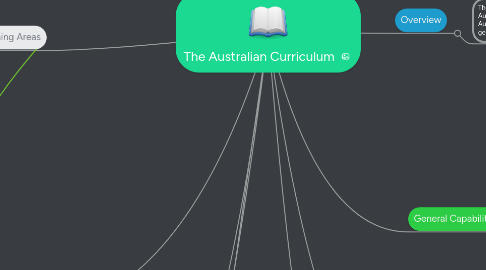
1. Technologies
1.1. Design and Technologies
1.1.1. Foundation - Year 2: By the end of Year 2, students describe the purpose of familiar products, services and environments and how they meet the needs of users and affect others and environments. They identify the features and uses of some technologies for each of the prescribed technologies contexts.
1.1.2. Year 3/4 - By the end of Year 4 students explain how products, services and environments are designed to best meet needs of communities and their environments. They describe contributions of people in design and technologies occupations. Students describe how the features of technologies can be used to produce designed solutions for each of the prescribed technologies contexts.
1.1.3. Year 5/6 - By the end of Year 6 students describe some competing considerations in the design of products, services and environments taking into account sustainability. They describe how design and technologies contribute to meeting present and future needs. Students explain how the features of technologies impact on designed solutions for each of the prescribed technologies contexts.
1.2. Digital Technologies
1.2.1. Foundation -Year 2: By the end of Year 2, students identify how common digital systems (hardware and software) are used to meet specific purposes. They use digital systems to represent simple patterns in data in different ways.
1.2.2. Year 3/4 - By the end of Year 4, students describe how a range of digital systems (hardware and software) and their peripheral devices can be used for different purposes. They explain how the same data sets can be represented in different ways.
1.2.3. Year 5/6 - By the end of Year 6, students explain the fundamentals of digital system components (hardware, software and networks) and how digital systems are connected to form networks. They explain how digital systems use whole numbers as a basis for representing a variety of data types.
2. Learning Areas
2.1. Mathematics
2.1.1. Number and Algebra
2.1.2. Measurement and Geometry
2.1.3. Statistics and Porbability
2.2. English
2.2.1. Language
2.2.2. Literature
2.2.2.1. Literacy
2.3. Science
2.3.1. Science Understanding
2.3.2. Science as a Human Endeavour
2.3.3. Science Inquiry Skills
2.4. Humanities and Social Sciences
2.4.1. History
2.4.2. Geography
2.5. The Arts
2.5.1. Dance
2.5.2. Drama
2.5.3. Music
2.5.4. Media Arts
2.5.5. Music Arts
2.6. Health and Physical Educationa
3. Key Ideas
3.1. Overarching Idea
3.1.1. The Technologies curriculum provides students with opportunities to consider how solutions that are created now will be used in the future
3.2. Project Management
3.2.1. Students will develop skills to manage projects to successful completion through planning, organising and monitoring timelines, activities and the use of resources
3.3. System Thinking
3.3.1. A system is an organised group of related objects or components that form a whole
3.4. Design Thinking
3.4.1. Design thinking involves the use of strategies for understanding design needs and opportunities, visualising and generating creative and innovative ideas, planning, and analysing and evaluating those ideas that best meet the criteria for success.
3.5. Computational thinking
3.5.1. Computational thinking is a problem-solving method that is applied to create solutions that can be implemented using digital technologies.
4. Aims and Objectives
4.1. investigate, design, plan, manage, create and evaluate solutions
4.2. are creative, innovative and enterprising when using traditional, contemporary and emerging technologies, and understand how technologies have developed over time
4.3. make informed and ethical decisions about the role, impact and use of technologies in the economy, environment and society for a sustainable future
4.4. engage confidently with and responsibly select and manipulate appropriate technologies − materials, data, systems, components, tools and equipment − when designing and creating solutions
4.5. critique, analyse and evaluate problems, needs or opportunities to identify and create solutions
5. Student Diversity
5.1. The Disability Discrimination Act 1992 and the Disability Standards for Education 2005 require education and training service providers to support the rights of students with disability to access the curriculum on the same basis as students without disability.
6. Curriculum Overview
6.1. 7 General Capabilities
6.1.1. Literacy
6.1.2. Numeracy
6.1.3. Critical an Creative Thinking
6.1.4. Personal and Social Capability
6.1.5. ICT Capability
6.1.6. Ethical Understanding
6.1.7. Intercultural Understanding
7. Cross Curricular Priorities
7.1. Aboriginal and Torres Strait Islander histories and cultures
7.1.1. Country/Place
7.1.2. People
7.1.3. Culture
7.2. Asia and Australia’s engagement with Asia
7.2.1. Asia and its diversity
7.2.2. Achievements and contributions of the peoples of Asia
7.2.3. Asia-Australia Engagement
7.3. Sustainability
7.3.1. Systems
7.3.2. World Views
7.3.3. Futures
